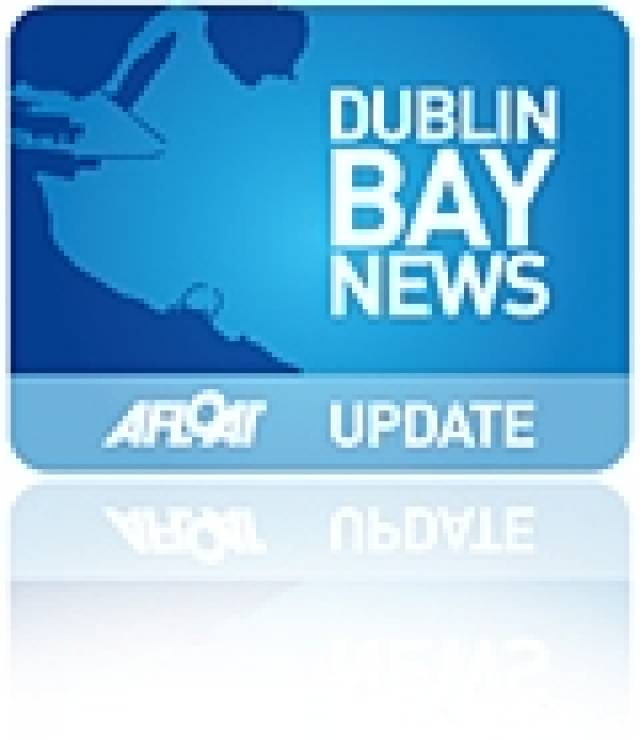#INSC - Wind, wind and more wind greeted the participants in the Rathfarnham Ford Dublin Bay Spring Series at the weekend, writes Kenneth Rumball.
This is by far the windiest winter I have known so far with lots of sailing cancelled. Nonetheless the wind gods usually shone on Dublin Bay on Sunday mornings and allowed wind speeds to drop under the usual 40+ knots to allow the two INSC race training boats to compete in the Spring Series.
We weren’t always so lucky with two Sundays' racing lost due to the high winds. Chief organiser Fintan Cairns made an excellent decision to extend the series to run an extra race on 23 March to make up for one of the lost days.
The high winds did not allow the two team INSC boats, helmed and skippered by Kenneth Rumball and Alexander Rumball, to get out and do some pre-event training in their 1720 sportsboats prior to the first race of the series.
The team changed the configuration of their boats somewhat for this series by leaving the Dacron teaching sails on the dock and through some clever thinking modified 1720 class ‘Club’ jibs were able to be mounted on the Harken cruising foils usually used for teaching. Kevlar mainsails were also added in the drive to make the boats more competitive than ever. The signature navy antifouling remained in place to keep the boats from going too fast!
Most of the clients on the two boats had already sailed with team INSC in the DBSC Turkey Shoot Series and in the DBSC Winter Series last winter, so the lost training day did not hamper the teams as much as we had thought it would.
Due to the fact the INSC race teams had done some racing with us before meant we could push our boats harder than before, with our crews definitely making the jump from novice racer to seasoned 1720 crew. We had some fantastic races with both boats honing down wind with the 1720 mast head spinnakers and excellent crew work keeping the hull under the mast.
Screaming by other cruiser-racers with mouths ajar as to the speeds the INSC teams were doing downwind, the GPS on one boat saw a max speed of 16kts one day in a big gust.
Both INSC teams were always at the front of fleet, fighting for line honours. In fact in most races the only boats to place ahead of INSC2 were Wow, the Farr 42, and other much larger boats such as J109s.
The final day of Sunday 23 March saw both boats leaving the pontoons with gusts out in the bay of 30-plus knots. Both sets of crews were a little rusty having had a ‘rest weekend’ over the St Patrick's Day break and nerves were a little high on both boats. This, coupled with a long run from the yellow outfall mark off the West Pier down to the Muglins, meant both boats knew they would have to push hard down-wind to pass the fleet.
And push they did! INSC 1, INSC 2 and Déjà vu all rounded the top mark very closely in that order. A tight top reach mean the kites stayed in the ships, however on gybing around the outfall mark, INSC 2 hoisted their yellow afterburner fractional kite and took off. INSC 1 was a little later behind but had the kite up as soon as possible, with the apparent wind shooting forwards, the two boats along with RIYC2 another 1720, blasted to the Muglins.
By the Muglins, INSC 2 had taken the fleet apart from one boat with INSC 1 and RIYC 2 on their heels. Up the final beat home, INSC 1 and RIYC 2 caught close to INSC 2 with a big left shift. However INSC 2 took line honours with RIYC 2 and INSC 1 on their heels!
In the overall results, INSC 1 finished up seventh with INSC 2 in tenth place - both boats claiming a top 10 finish.
Another fantastic race training programme and what is being dubbed the best race training programme in the bay will continue on Tuesday nights into the summer. If you want to learn how to crew a race boat, check out www.insc.ie.

























